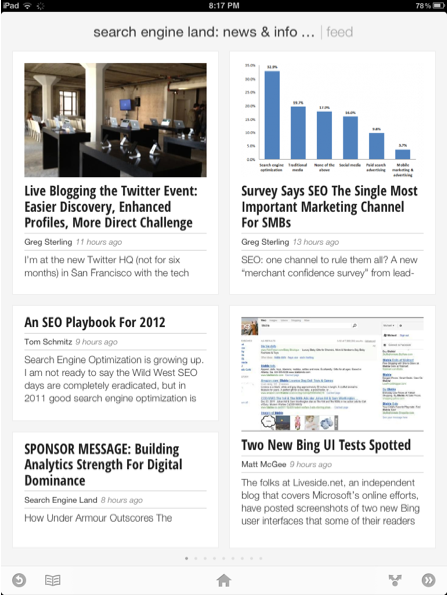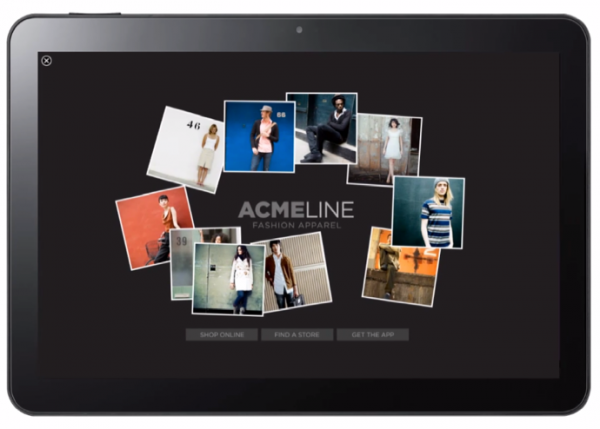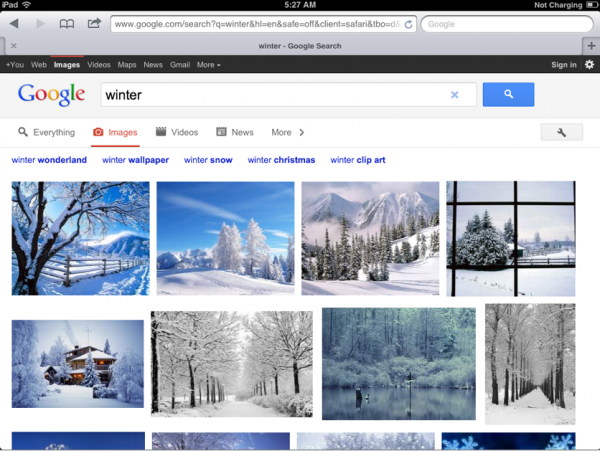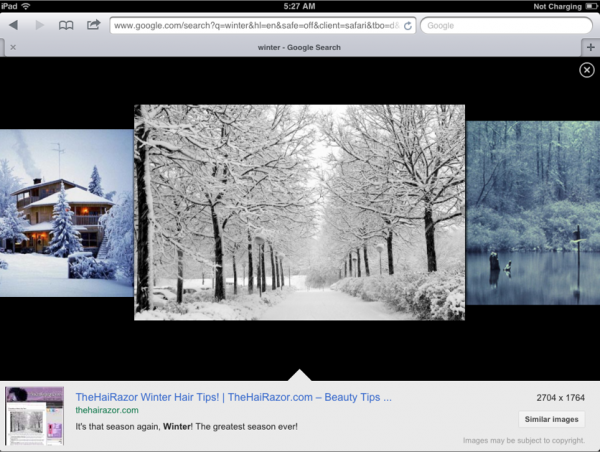Google Makes Frontal Assault On Tablets: “Currents,” Carousel Images, Media Ads
Yesterday was a busy tech-news day. While the major news was Twitter’s redesign, Google made a number of announcements as well. Three of them were directed at tablets (or the iPad). The major announcement was Google Currents, which will now go head-to-head with Flipboard, Zite, Taptu, Pulse, AOL Editions and Yahoo Livestand, among others, including […]
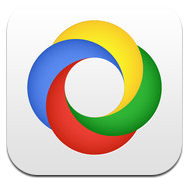
The two other Google tablet-related announcements were about new, rich media ad formats and a new “carousel” presentation of image search results.
Google Currents: Good but Not Great
Google’s long awaited magazine/publishing platform for tablets enters what has become a very competitive field of “personalized news aggregators.” Not all of these tablet apps can survive however. Google’s Currents may survive simply because it’s associated with Google — and there’s already a lot of content there: “150 publishing partners.”
Yahoo and AOL’s tablet magazines, AOL Editions and Livestand, may not be as lucky because of the comparative weakness of their brands vs. Google. Some of the startups won’t make it either, because they simply don’t have the visibility.
For those not among the select “150 publishing partners” to launch yesterday on Currents there’s a self-service platform to enable publishers to create their own Currents editions. (This arguably competes with tablet-conversion software such as Onswipe.) Search Engine Land was able to quickly create a Currents edition using the self-service tool.
After playing around with Currents last night and this morning a bit, I’d say it’s generally a good experience but there’s little to distinguish it from the field. It feels very much like a “me-too” app at this point. If I had to give it a letter grade I’d give it a solid “B.” It’s less functional than a Zite and less visually interesting than a Flipboard, for example. (I consider Flipboard to be beautiful but generally unusable.)
See also my sidebar piece, Newsreader iSmackdown: Zite vs. Flipboard vs. Google Currents.
Rich “Media Ads” for Tablets
To go along with Currents and tablets more broadly, Google also announced a range of new rich media ad formats. This builds on tablet-specific ad formats Google introduced earlier this year. The new “Media Ads” also work on smartphones. They can include video and interactive images presented an a variety of interesting ways.
They’re intended to be more interactive than conventional mobile display advertising. Google also aims to make these ads easy to create from existing media “assets”:
These new rich media templates will make it easy for advertisers to create rich media ads for tablets using existing assets (photos, logos, etc.) and then implement them across platforms (mobile, tablet and desktop). Advertisers can use these templates in a number of ways, including to interact with a specific product, feature a collection of products or promote foot traffic to a specific store location.
Google found in consumer, focus-group research that tablet owners expected ads to be more interactive than conventional online advertising.
[youtube]https://www.youtube.com/watch?v=xMaDAd5apZA&feature=player_embedded[/youtube]
Ride the Image Carousel
Google also debuted a new way to look at image search results on tablets. After conducting an image search you can enter a new carousel view. There you can swipe horizontally to browse images in a larger format.
There are already about 50 million tablets in the market, not counting “eReaders.” After the holiday dust has settled we’ll probably find that millions more were given as gifts — tablets are at the top of holiday “wish lists.”
The iPad and tablets beyond the iPad — now that’s mostly the Kindle Fire — are an important new medium. Consumers are more engaged with them for personal and leisure activities than PCs, which emerge as utilitarian boxes now by comparison. Tablets have larger screens than smartphones, making them better suited to a range of activities, including shopping and ecommerce.
Google correctly recognizes tablets are a new strategic platform and brand advertising medium, and is investing accoringly.
Contributing authors are invited to create content for MarTech and are chosen for their expertise and contribution to the martech community. Our contributors work under the oversight of the editorial staff and contributions are checked for quality and relevance to our readers. The opinions they express are their own.
Related stories
